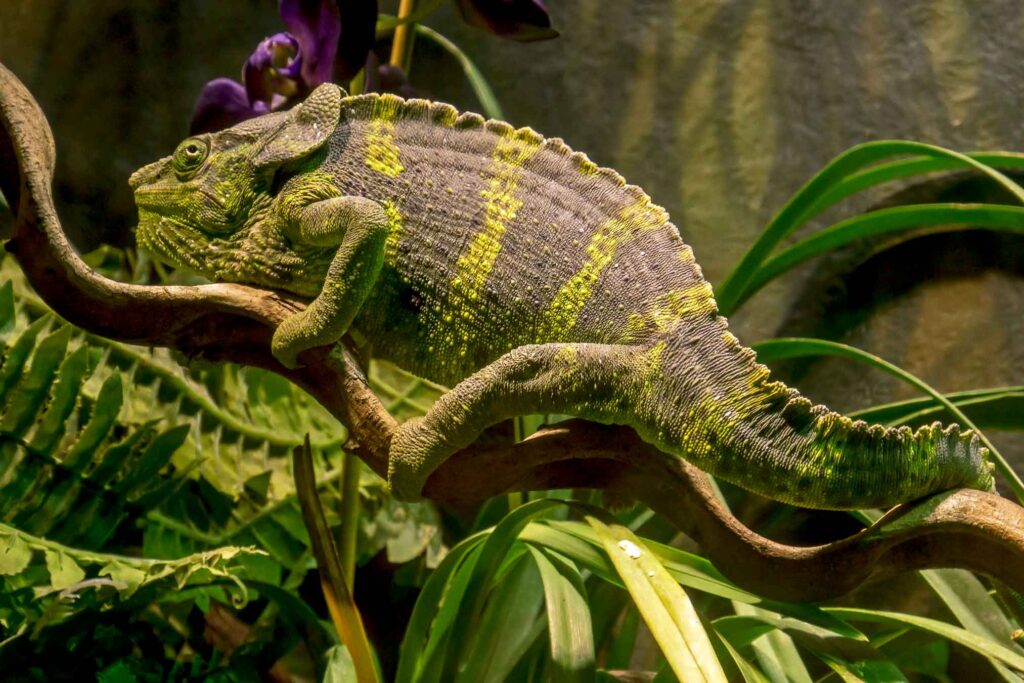
Veiled chameleon
Chamaeleo calyptratus
MAXIMUM LENGTH

55 cm
FEEDING

Omnivore
ACTIVITY

Diurnal
The Yemen chameleon, or veiled chameleon, owes its name to the size of its casque. This protuberance develops as the specimen grows and matures.
They are usually green in colour with white, brown or yellow spots. Their skin changes colour according to their mood. They usually turn darker when they are stressed.
It is a funny-looking species. They are clearly sexually dimorphic – the male’s casque is much larger than the female’s, and males are also larger in size and their colouring is much more eye-catching and striking. There is also a widening at the base of the tail in which males house penises, a characteristic of all chameleon species.
They live in warm climate forests, mainly in treetops. Only females come down to the ground when they go to lay their eggs. It is an oviparous species. Females lay large clutches of up to 85 eggs. Eggs are buried in the sand by the female and take between 6 and 7 months to hatch.
They mainly feed on insects, but they are practically the only chameleon species that adds certain vegetables to its diet.
Interesting facts
Its scientific name, Chamaeleo calyptratus, also refers to the size of its casque, as “calyptra” is a kind of ornate veil worn by women in Ancient Greece.
Distribution
Conservation status

